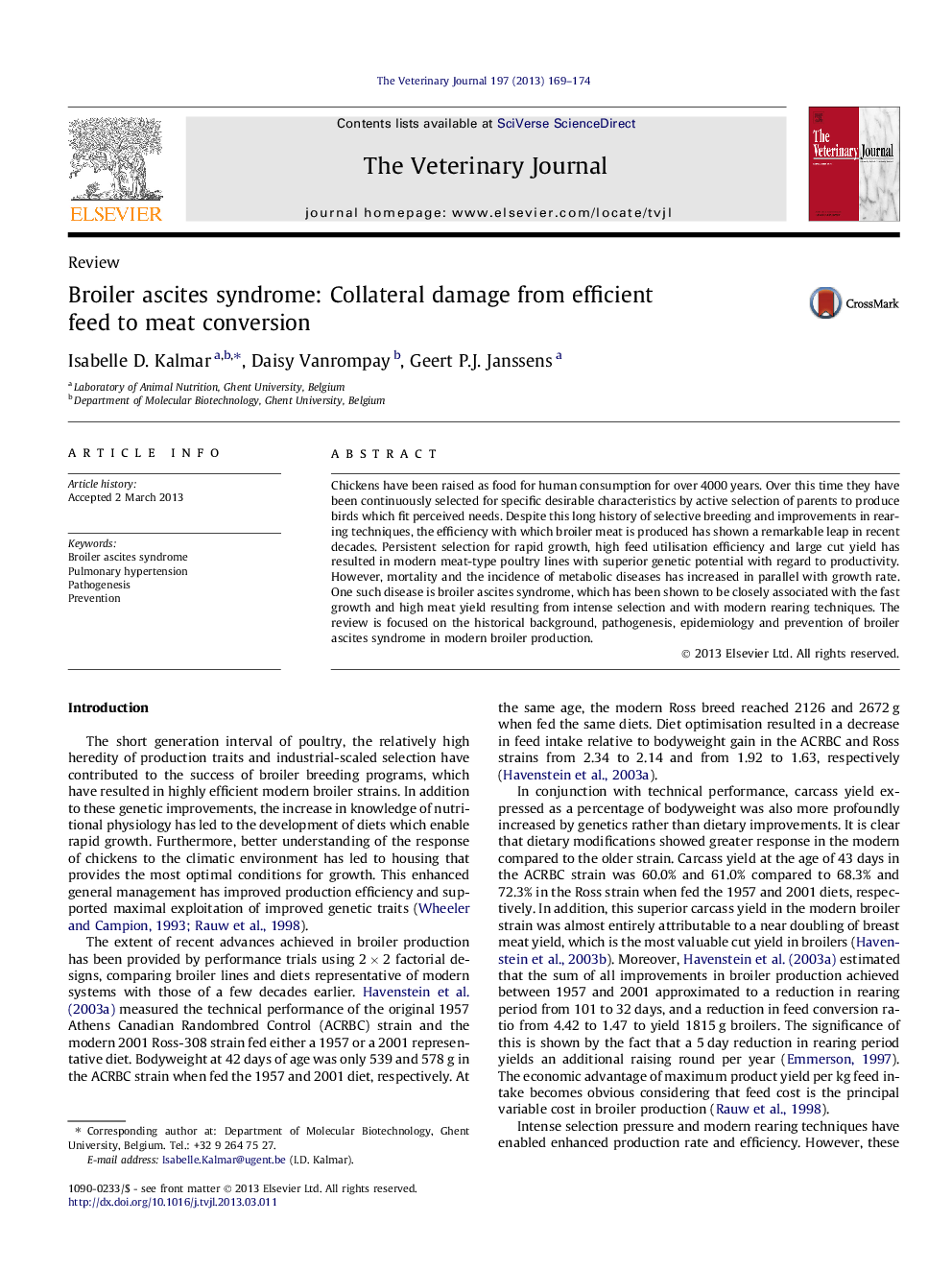| Article ID | Journal | Published Year | Pages | File Type |
|---|---|---|---|---|
| 5798192 | The Veterinary Journal | 2013 | 6 Pages |
Chickens have been raised as food for human consumption for over 4000Â years. Over this time they have been continuously selected for specific desirable characteristics by active selection of parents to produce birds which fit perceived needs. Despite this long history of selective breeding and improvements in rearing techniques, the efficiency with which broiler meat is produced has shown a remarkable leap in recent decades. Persistent selection for rapid growth, high feed utilisation efficiency and large cut yield has resulted in modern meat-type poultry lines with superior genetic potential with regard to productivity. However, mortality and the incidence of metabolic diseases has increased in parallel with growth rate. One such disease is broiler ascites syndrome, which has been shown to be closely associated with the fast growth and high meat yield resulting from intense selection and with modern rearing techniques. The review is focused on the historical background, pathogenesis, epidemiology and prevention of broiler ascites syndrome in modern broiler production.
